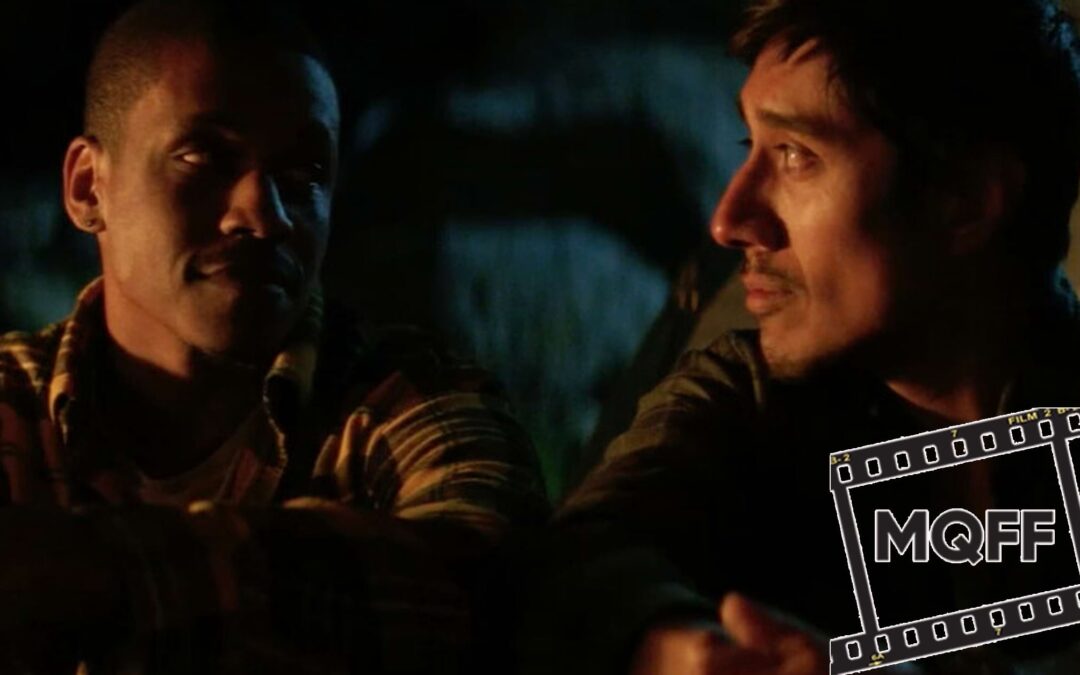Synopsis
Two young men cross paths on the back roads of the American Southwest and despite their different backgrounds, find common ground along the Border.
Emerald City is an lgbtqia+ story of two young men: one who has aged out of foster care where he was placed after his parents were deported and the other on his way to join the border patrol. Each isolated in their own way, both seek a sense of community, of belonging, and meet on the back roads of the American Southwest, where they develop a tentative friendship that gradually becomes more.
Director Biography – Josef Steiff
Josef (Joe) Steiff is an independent filmmaker and writer whose work has exhibited in the Americas, Europe, and Asia. Raised where Guns & Ammo outsold Penthouse and prestige was based on the size of the satellite dish in your front yard, he doesn’t talk with much of a drawl unless he’s really tired — or you’ve bought him that second shot of whiskey — because his family said it would make people think he wasn’t smart. As a former licensed social worker, he creates work that reflects his interest in the ways that people struggle to make personal sense out of random, impersonal events. Feature films like The Other One (writer/director) and More Beautiful Than a Flower (producer), as well as his shorts “Jesse James,” “Emerald City,” “Borders,” “Catching Fire,” “I Like My Boyfriend Drunk,” and “How Will I Tell? Surviving Sexual Assault,” reflect on social issues. He served as general crew on Michael Moore’s Roger & Me and Wendy Weinberg’s Academy Award nominated documentary, Beyond Imagining. He contributed a sound installation to the first major art exhibition regarding HIV in the United States, “AIDS: The Artists’ Response,” and is the writer/performer of the critically acclaimed one-man show Golden Corral about his experiences growing up and working in rural Appalachia. His publications include “To Lose My Mind and Save My Soul: The Masculine and Feminine in Films Set in the Forest” in Cuaderno No. 91 The Heroine’s Path in Film and Other Narratives and an essay about gay domestic violence, “Flashpoint,” in Hinterland. In addition he has written or co-written three books on aspects of filmmaking and edited several books on popular culture, including topics that include anime, manga, Sherlock Holmes, and the TV series Battlestar Galactica.
Featuring a diverse cast and crew (race, ethnicity, gender, sexual orientation, ability), this was one of the best teams I’ve ever had the privilege of working with. We had an amazing time filming in and around Potrero, California.
Reading David Bobrow’s script for Emerald City, I knew it was something special right off. Inspired by his own experience hitchhiking across the US, David set Emerald City against the backdrop of the immigration issues along the US border with Mexico, creating a story of two people coming from completely different perspectives on those issues and yet finding a connection with each other. The politics give way to a story of human connection. As a result, this is one of the most unabashedly romantic films I’ve every made.
The script’s overt film references include Wizard of Oz, Almost Famous, and Butch Cassidy & the Sundance Kid, though there are others hidden within the story. Cinematographer Matt Hayward and I wanted to create an image reminiscent of Westerns and other (more modern) stories set in the vast landscapes of the American Southwest. This led to shooting with anamorphic lenses and re-creating the extremely wide aspect ratio Westerns often employed to emphasize the environment. We wanted the film’s beginning to emphasize the bleakness each character felt by desaturating the colors and utilizing a sparse sound design. But as the two young men get closer — to Emerald City and recognizing the depth of their connection — the images and sound design become more lush, until they find that the feelings of community they seek are within and around them.
Photos
See all photos >>
Videos
See all videos >>
Cast
See full cast >>
Countries: United StatesLanguages: English











